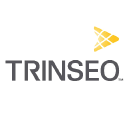/ factorpad.com / stocks / f25bzk.html
An ad-free and cookie-free website.
Our quantitative data points are meant to provide a high-level understanding of factors in equity risk models for Trinseo Sa. Portfolio managers use these models to forecast risk, optimize portfolios and review performance.
We show how TSE stock compares to 2,000+ US-based stocks, and to peers in the Manufacturing sector and Plastics Material and Resin Manufacturing industry.
Please do not consider this data as investment advice. Data is downloaded from sources we deem reliable, but errors may occur.
 Trinseo (NYSE:TSE) is a global materials solutions provider and manufacturer of plastics, latex binders, and synthetic rubber with a focus on delivering innovative, sustainable, and value-creating products that are intrinsic to our daily lives. By partnering with like-minded stakeholders, Trinseo is dedicated to making a positive impact on society by supporting the sustainability goals of our customers in a wide range of end-markets including automotive, consumer electronics, appliances, medical devices, packaging, footwear, carpet, paper and board, building and construction, and tires. Trinseo had approximately $3.8 billion in net sales with 2,700 employees globally in 2019.
Trinseo (NYSE:TSE) is a global materials solutions provider and manufacturer of plastics, latex binders, and synthetic rubber with a focus on delivering innovative, sustainable, and value-creating products that are intrinsic to our daily lives. By partnering with like-minded stakeholders, Trinseo is dedicated to making a positive impact on society by supporting the sustainability goals of our customers in a wide range of end-markets including automotive, consumer electronics, appliances, medical devices, packaging, footwear, carpet, paper and board, building and construction, and tires. Trinseo had approximately $3.8 billion in net sales with 2,700 employees globally in 2019.
Many of the following risk metrics are standardized and transformed into quantitative factors in institutional-level risk models.
Rankings below represent percentiles from 1 to 100, with 1 being the lowest rating of risk.
Stocks with higher beta exhibit higher sensitivity to the ups and downs in the market. (↑↑)
Stocks with higher market capitalization often have lower risk. (↑↓)
Higher average daily dollar volume over the past 30 days implies lower liquidity risk. (↑↓)
Higher price momentum stocks, aka recent winners, equate to lower risk for many investors. (↑↓)
Style risk factors often include measures of profitability and payout levels.
Companies with higher earnings generally provide lower risk. (↑↓)
Companies with higher dividend yields, if sustaintable, are perceived to have lower risk. (↑↓)
/ factorpad.com / stocks / f25bzk.html
A newly-updated free resource. Connect and refer a friend today.